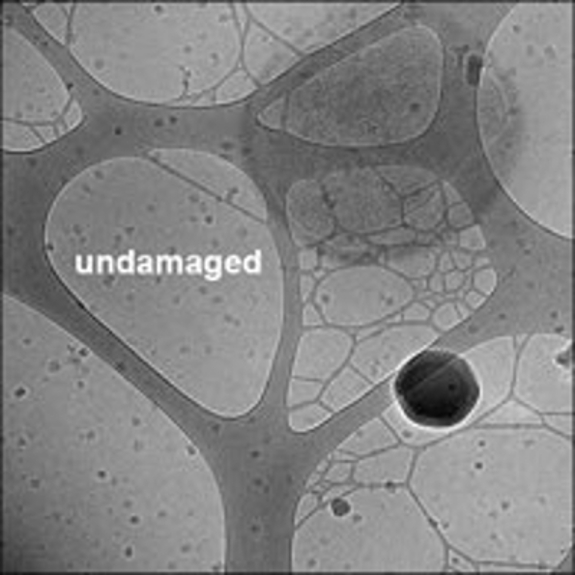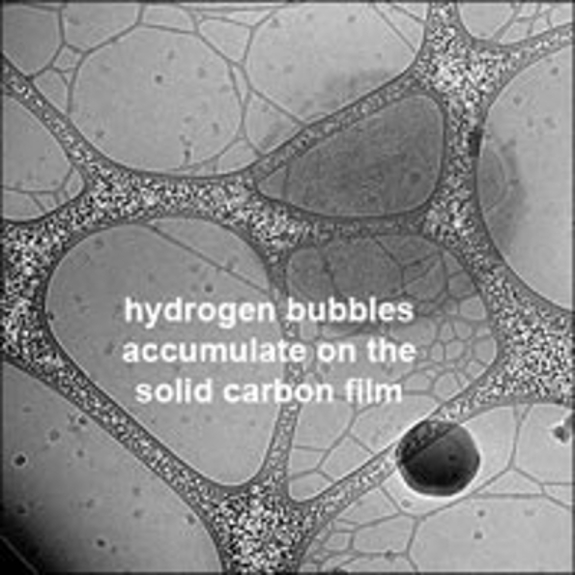Electron tomography (ET) is a method that allows the user to generate a three-dimensional (3d) model of a specimen in the electron microscope by recording a series of images as the specimen is tilted along an axis normal to the electron beam. Most transmission electron microscopy (TEM) images are, at least to a first approximation, two-dimensional (2d) projections of the 3d specimen and several completely different formalisms have been used to show that it is possible to reconstruct a 3d object from 2d projections. For example, the figure to the left shows the relationship between projection images of a 3d object (top panel) and the back-projection of those 2d images to create a 3d volume (bottom panel). The different formalisms are the mathematical basis for the field of ET, and in recent years, the introduction of computer control over electron microscopes has made the technique available to most of the electron microscopy community.
By severely limiting the electron dose, ET can be performed with a frozen specimen. This approach is called cryo electron tomography (cryoET) and simply merges extremely minimal dose ET data collection techniques with the use of a frozen sample. The sample can be a conventionally plunge frozen grid of the sort used for single particle imaging and reconstruction (and this is the type of sample most commonly used for sub-tomogram averaging), it can be a cryo-section cut from a much larger block of frozen material (e.g., a high pressure frozen sample) using a cryo ultra-microtome or even a cryo-section cut out of larger frozen block using a focused ion beam that operates at low temperatures (aka, a cryo-FIB). For the purposes of this discussion, specimen origins and properties will be ignored except in cases where it makes an important difference.




